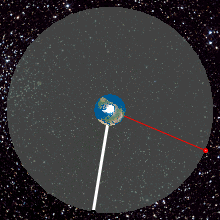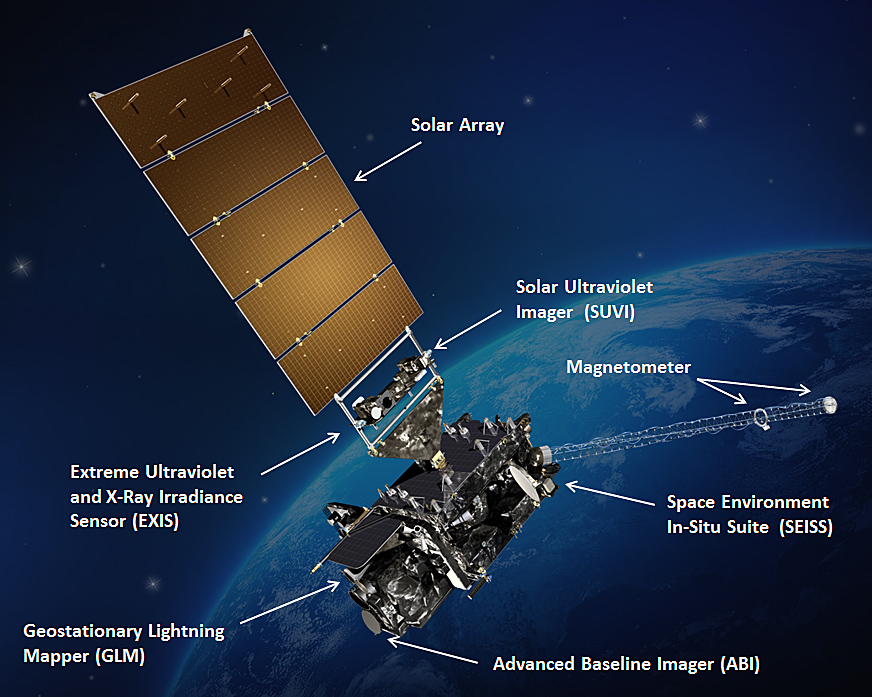|
1987 In Spaceflight
The following is an outline of 1987 in spaceflight. Launches Deep-space rendezvous There were no deep-space rendezvous in 1987. References Footnotes {{Orbital launches in 1987 1987 in spaceflight, Spaceflight by year ... [...More Info...] [...Related Items...] OR: [Wikipedia] [Google] [Baidu] |
Atlas H
The Atlas H was an American expendable launch system derived from the SM-65 Atlas missile. It was a member of the Atlas (rocket family), Atlas family of rockets, and was used to launch five clusters of Naval Ocean Surveillance System, NOSS satellites for the US National Reconnaissance Office. Two flights also carried Living Plume Shield (satellite), LiPS satellites, as secondary payloads for the United States Naval Research Laboratory. The Atlas H was a stage and a half rocket, using the enhanced Atlas rocket designed for use as the first stage of the Atlas G rocket, which differed from the Atlas H in having a Centaur (rocket stage), Centaur upper stage. This stage was later reused as the first stage of the Atlas I. In practice, an MSD (rocket stage), MSD upper stage was flown on all five launches. Atlas H could put a payload of 3,630 kg (8,000 lb) into low Earth orbit, or a payload of 2,255 kg (4,971 lb) into a geostationary transfer orbit. Launches The At ... [...More Info...] [...Related Items...] OR: [Wikipedia] [Google] [Baidu] |
Vandenberg Air Force Base
Vandenberg may refer to: * Vandenberg (surname), including a list of people with the name * USNS ''General Hoyt S. Vandenberg'' (T-AGM-10), transport ship in the United States Navy, sank as an artificial reef in Key West, Florida * Vandenberg Space Force Base, a United States military installation with a spaceport * Vandenberg (band), a Dutch hard rock band ** ''Vandenberg'' (album), their 1982 debut album * Vandenberg resolution, a United States Congress resolution passed in 1948 {{disambig ... [...More Info...] [...Related Items...] OR: [Wikipedia] [Google] [Baidu] |
Palapa B2-P
Agila-1 or Mabuhay was launched on March 20, 1987, under the name Palapa B2-P in Cape Canaveral Air Force Station. It was originally under Indonesian company, PT Pasifik Satelit Nusantara until it was acquired by Philippine company, Mabuhay Satellite Corporation which is under PLDT in 1996. Upon its acquisition by Mabuhay, it became the first Philippine satellite through acquisition while in orbit. Palapa B2-P was later renamed to "Agila-1", the local name for the Philippine eagle. The satellite's operation ended in January 1998 and was deorbited. References {{Orbital launches in 1987 Telecommunications in the Philippines First artificial satellites of a country Spacecraft launched in 1987 Satellites of the Philippines Satellites using the HS-376 bus ... [...More Info...] [...Related Items...] OR: [Wikipedia] [Google] [Baidu] |
Geostationary Orbit
A geostationary orbit, also referred to as a geosynchronous equatorial orbit''Geostationary orbit'' and ''Geosynchronous (equatorial) orbit'' are used somewhat interchangeably in sources. (GEO), is a circular orbit, circular geosynchronous orbit in altitude above Earth's equator, in radius from Earth's center, and following the retrograde and prograde motion, direction of Earth's rotation. An object in such an orbit has an orbital period equal to Earth's rotational period, one sidereal time, sidereal day, and so to ground observers it appears motionless, in a fixed position in the sky. The concept of a geostationary orbit was popularised by the science fiction writer Arthur C. Clarke in the 1940s as a way to revolutionise telecommunications, and the first satellite to be placed in this kind of orbit was launched in 1963. Communications satellites are often placed in a geostationary orbit so that Earth-based satellite dish, satellite antennas do not have to rotate to track t ... [...More Info...] [...Related Items...] OR: [Wikipedia] [Google] [Baidu] |
Weather Satellite
A weather satellite or meteorological satellite is a type of Earth observation satellite that is primarily used to monitor the weather and climate of the Earth. Satellites are mainly of two types: polar orbiting (covering the entire Earth asynchronously) or geostationary (hovering over the same spot on the equator). While primarily used to detect the development and movement of storm systems and other cloud patterns, meteorological satellites can also detect other phenomena such as city lights, fires, effects of pollution, auroras, sand and dust storms, snow cover, ice mapping, boundaries of ocean currents, and energy flows. Other types of environmental information are collected using weather satellites. Weather satellite images helped in monitoring the volcanic ash cloud from Mount St. Helens and activity from other volcanoes such as Mount Etna. Smoke from fires in the western United States such as Colorado and Utah have also been monitored. El Niño and its effects on wea ... [...More Info...] [...Related Items...] OR: [Wikipedia] [Google] [Baidu] |
National Oceanic And Atmospheric Administration
The National Oceanic and Atmospheric Administration (NOAA ) is an American scientific and regulatory agency charged with Weather forecasting, forecasting weather, monitoring oceanic and atmospheric conditions, Hydrography, charting the seas, conducting deep-sea exploration, and managing fishing and protection of marine mammals and endangered species in the US exclusive economic zone. The agency is part of the United States Department of Commerce and is headquartered in Silver Spring, Maryland. History NOAA traces its history back to multiple agencies, some of which are among the earliest in the federal government: * United States Coast and Geodetic Survey, formed in 1807 * National Weather Service, Weather Bureau of the United States, formed in 1870 * United States Fish Commission, Bureau of Commercial Fisheries, formed in 1871 (research fleet only) * NOAA Commissioned Corps, Coast and Geodetic Survey Corps, formed in 1917 The most direct predecessor of NOAA was the Enviro ... [...More Info...] [...Related Items...] OR: [Wikipedia] [Google] [Baidu] |
GOES 7
GOES-7, known as GOES-H before becoming operational, is an American satellite. It was originally built as a weather satellite, and formed part of the US National Oceanic and Atmospheric Administration's Geostationary Operational Environmental Satellite system. Originally built as a ground spare, GOES-H was launched in 1987 due to delays with the next series of satellites. It was operated by NOAA until 1999, before being leased to Peacesat, who use it as a communications satellite. As of 2009, it was operational over the Pacific Ocean, providing communications for the Pacific Islands. On April 12, 2012, the spacecraft was finally decommissioned and moved to a graveyard orbit. Launch GOES-H was launched aboard a McDonnell Douglas Delta 3914 rocket, flying from Launch Complex 17A at the Cape Canaveral Air Force Station. The launch occurred at 23:05 GMT on 26 February 1987. The launch had originally been scheduled for late 1986, but was delayed after GOES-G failed to achieve orbit. ... [...More Info...] [...Related Items...] OR: [Wikipedia] [Google] [Baidu] |
Cape Canaveral Air Force Station Space Launch Complex 17
Space Launch Complex 17 (SLC-17), previously designated Launch Complex 17 (LC-17), was a launch site at Cape Canaveral Space Force Station, Florida used for Thor and Delta launch vehicles launches between 1958 and 2011. Originally built in 1956, SLC-17 features two expendable launch vehicle (ELV) launch pads, SLC-17A and SLC-17B. The pads were operated by the 45th Space Wing and have supported more than 300 Department of Defense, NASA and commercial missile and rocket launches. History SLC-17 was built in 1956 by the United States Air Force for use with the PGM-17 Thor missile, the first operational ballistic missile in the arsenal of the United States. It was initially designed for testing suborbital launches of the Thor, in accordance to the IRBM's planned stationing in the United Kingdom as part of Project Emily. Pad 17A supported its first Thor missile launch on 3 August 1957, and Pad 17B supported its first Thor launch on 25 January 1957. As the Thor got wound down fr ... [...More Info...] [...Related Items...] OR: [Wikipedia] [Google] [Baidu] |
Cape Canaveral Air Force Station
Cape Canaveral Space Force Station (CCSFS) is an installation of the United States Space Force's Space Launch Delta 45, located on Cape Canaveral in Brevard County, Florida. Headquartered at the nearby Patrick Space Force Base, the station is the primary launch site for the Space Force's Eastern RangeCAST 1999, p. 1-12. with four launch pads currently active (Space Launch Complexes 36, 40, 41 and 46). The facility is south-southeast of NASA's Kennedy Space Center on adjacent Merritt Island, with the two linked by bridges and causeways. The Cape Canaveral Space Force Station Skid Strip provides a runway close to the launch complexes for military airlift aircraft delivering heavy and outsized payloads to the Cape. A number of American space exploration pioneers were launched from CCSFS, including the first U.S. Earth satellite (1958), first U.S. astronaut (1961), first U.S. astronaut in orbit (1962), first two-man U.S. spacecraft (1965), first U.S. uncrewed lu ... [...More Info...] [...Related Items...] OR: [Wikipedia] [Google] [Baidu] |
Delta 3000
The Delta 3000 series was an American expendable launch system which was used to conduct 38 orbital launches between 1975 and 1989. It was a member of the Delta family of rockets. Several variants existed, which were differentiated by a four digit numerical code. Configurations The first stage was the RS-27 powered Extended Long Tank Thor, first flown on the 2000-series. Three or nine Castor-4 solid rocket boosters (SRB) were attached to increase thrust at lift-off, replacing the less powerful Castor-2 boosters used on earlier models. Two second stages were available; the Delta-P, which had been flown on the Delta 1000 and 2000 series, or the Delta-K, an uprated version with the Aerojet engine. Some launches used a three-stage configuration in order to reach higher orbits. A Star-37D, Star-37E, or Star-48B PAM-D could be used as an upper stage. Launches with PAM-D upper stages were designated ''Delta 3XX0 PAM-D'', rather than assigning a code to the upper stage for us ... [...More Info...] [...Related Items...] OR: [Wikipedia] [Google] [Baidu] |
Molniya Orbit
A Molniya orbit ( rus, Молния, p=ˈmolnʲɪjə, a=Ru-молния.ogg, "Lightning") is a type of satellite orbit designed to provide communications and remote sensing coverage over high latitudes. It is a highly elliptical orbit with an inclination of 63.4 degrees, an argument of perigee of 270 degrees, and an orbital period of approximately half a sidereal day. The name comes from the '' Molniya'' satellites, a series of Soviet/Russian civilian and military communications satellites which have used this type of orbit since the mid-1960s. A variation on the Molniya orbit is the so-called Three Apogee (TAP) orbit, whose period is a third of a sidereal day. The Molniya orbit has a long dwell time over the hemisphere of interest, while moving very quickly over the other. In practice, this places it over either Russia or Canada for the majority of its orbit, providing a high angle of view to communications and monitoring satellites covering these high-latitude ar ... [...More Info...] [...Related Items...] OR: [Wikipedia] [Google] [Baidu] |
Communications Satellite
A communications satellite is an artificial satellite that relays and amplifies radio telecommunication signals via a Transponder (satellite communications), transponder; it creates a communication channel between a source transmitter and a Radio receiver, receiver at different locations on Earth. Communications satellites are used for television, telephone, radio, internet, and military applications. Many communications satellites are in geostationary orbit above the equator, so that the satellite appears stationary at the same point in the sky; therefore the satellite dish antennas of ground stations can be aimed permanently at that spot and do not have to move to track the satellite. Others form satellite constellations in low Earth orbit, where antennas on the ground have to follow the position of the satellites and switch between satellites frequently. The radio waves used for telecommunications links travel by Line-of-sight propagation, line of sight and so are obstructe ... [...More Info...] [...Related Items...] OR: [Wikipedia] [Google] [Baidu] |






